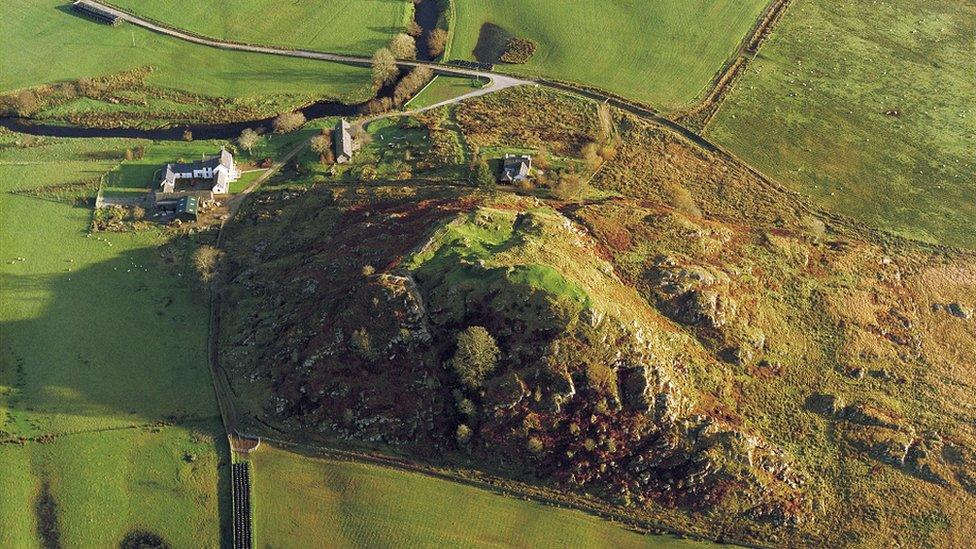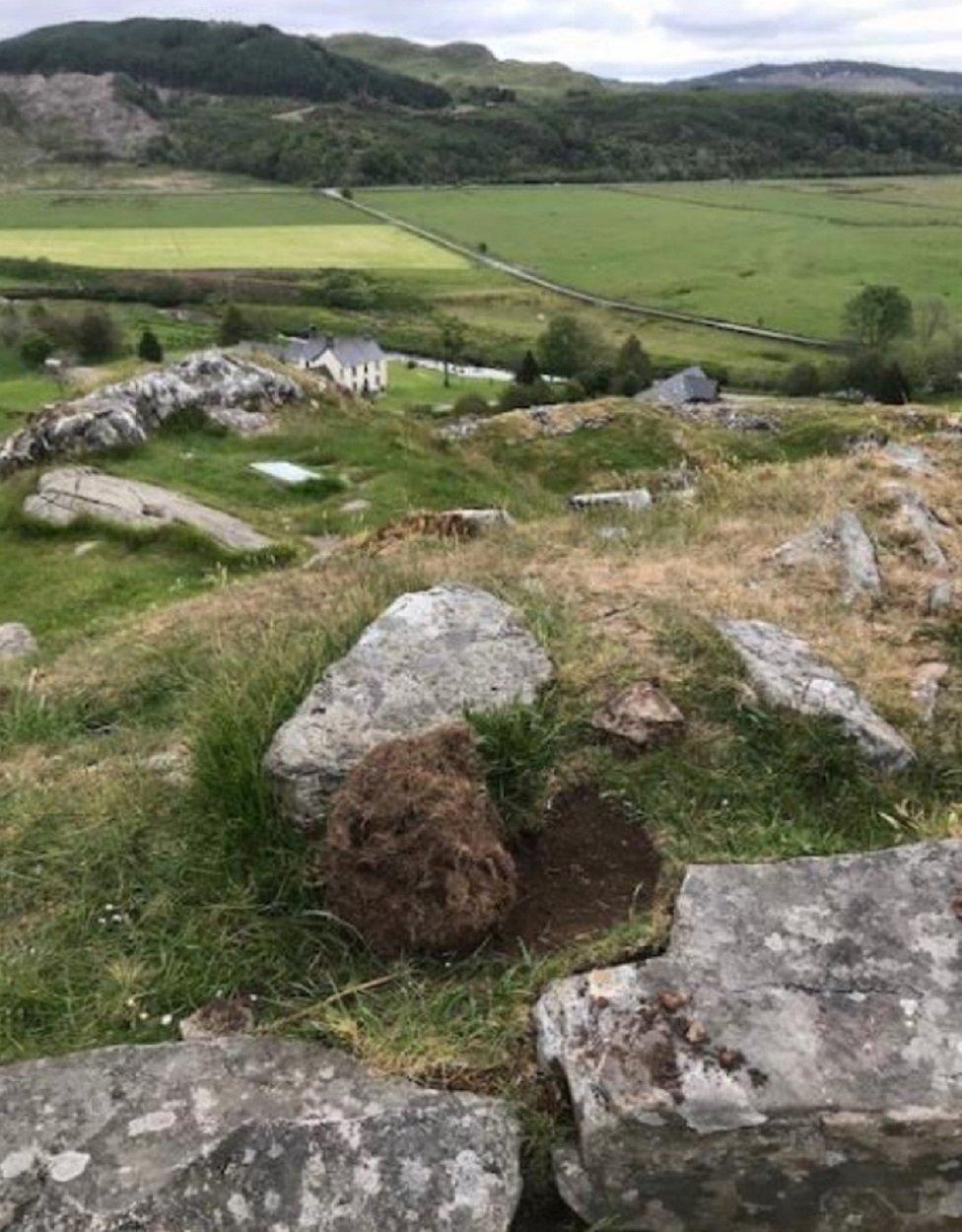Metal detectorists admit taking item from Iron Age Dunadd Fort
- Published

Dunadd is reputed to have been the capital of Dál Riata
Two men have been sentenced for illegal metal detecting at the capital of an ancient Scottish kingdom.
Andrejs Grisulis, 35, and Matthew Madden, 55, damaged a historic monument and removed an artefact at Dunadd Fort in Argyll's historic Kilmartin Glen.
The fort is reputed to have been the power base of Gaelic kings of the kingdom of Dál Riata.
Grisulis, of Kinlochleven, and Madden, of Fort William, have been given a community payback order.
The pair, who had previously admitted heritage offences at Dunoon Sheriff Court, were ordered to carry out 80 hours unpaid work and placed under supervision for six months.
A requirement of their sentence was that they do not enter any site owned and managed by Historic Environment Scotland (HES) for a period of two years.
The court also granted permission for the metal detecting equipment to be forfeited.

Police recovered an iron hammerhead
A member of the public alerted HES to the two men's activities in June 2020.
The Crown Office said 28 holes were found dug at the site and police later recovered an extremely fragile and vulnerable iron hammerhead.
Dunadd, near Lochgilphead, has been a legally protected site for 90 years.
It is an offence to use a metal detector or carry out unauthorised works on a scheduled monument without consent from HES or Scottish government.

Holes were found dug at Dunadd

The 2,000 year old fort commanded views over Moine Mhor - the "great moss" - an expanse of bog covering the southern end of Kilmartin Glen.
It was the royal power centre of Gaelic kings from about 500 to 800 AD.
Below the fort site are prehistoric features carved into the rock, including two human footprint shapes.
Anne Marie Hicks, assistant procurator fiscal for North Strathclyde, said Dunadd was of great significance to Scottish heritage and the local community.
She added: "It is vitally important that there are laws in place to protect such important sites and as with this case where there is sufficient evidence of a crime and if it is appropriate and in the public interest to do so, we will prosecute."
Police Scotland and HES have welcomed the sentencing.
HES senior ancient monuments officer Oliver Lewis said: "Heritage crime is a serious matter which can irreparably damage our monuments and cultural assets as well as our proud historical connections to the past."